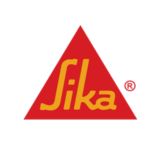Situation
Advanced Driver Assistance Systems (ADAS) and the calibration thereof have been a major topic for the Auto Glass Replacement (AGR) industry. The topic of ADAS isn’t new to vehicles as also ESC (electronic stability control), ABS (anti-lock braking systems) are part of ADAS systems.
What made it an issue for the AGR industry is the fact that more and more cars are equipped with camera based systems e.g. Lane Assist, Traffic Sign Recognition, Automatic High Beam Lights and Emergency Breaking for Pedestrians.
There are many more. Typically these systems are based on cameras which are mounted behind the windscreen and require calibration in case of windscreen replacement.
Calibration
Vehicle manufacturers require the re-calibration of such ADAS systems in case the windscreen has been changed. There are different concepts, which require different ways of calibration.
- Stationary Calibration: Vehicle is positioned in front of a special board. The calibration is initiated through the board computer. Calibration can be done quickly but there are special requirements on how it needs to be done and the investment for the equipment is quite large.
- Mobile Calibration: Some vehicles require a calibration drive. Typically the calibration drive needs to be done at a certain speed on a straight road.
Impact and Risks of Wrong Calibration
Until now, the Convention of Road Traffic, Vienna 1968, applies. The convention requires a driver to always be in control of the vehicle. Also most of the ADAS systems have some limitations, e.g. in bad weather or due to poor sight. Typically a vehicle will alert the driver that the ADAS or part of it isn’t working correctly. This can be due to “wrong calibration” or due to the fact that the system isn’t able to do the measurements properly.
Guidelines with 1C Sikaflex® and SikaTack® Adhesives
| Stationary Calibration | Can be done immediately after the glass is positioned. Vehicle should not be moved for at least the indicated MDAT (with airbags) of the product used. |
| Mobile Calibration | Calibration drive can be done after the MDAT (with airbags) is lapsed. By then the vehicle meets the minimum safety requirements to be driven. |
Due to the curing nature of the adhesive, the vehicle body stiffness is reduced for the first few days after installation. This may result in higher torsion of the vehicle or frozen tension if the car isn’t parked on a flat area while curing.
Guidelines for Powercure Adhesives
| Stationary Calibration | Can be done immediately after the glass is positioned. Vehicle should not be moved for at least the indicated SDAT (with airbags) of the product used. |
| Mobile Calibration | Calibration drive can be done after the SDAT (with airbags) is lapsed. By then the vehicle meets the minimum safety requirements to be driven |
As car body stiffness is returned to meet OEM requirements within 60 minutes for SikaTack® ELITE, there should be no negative impact on the calibration. The main benefit of PowerCure adhesives is that a glass shop owner can be sure that if the calibration worked in the shop and no warning light is on the dashboard that it will stay that way.
